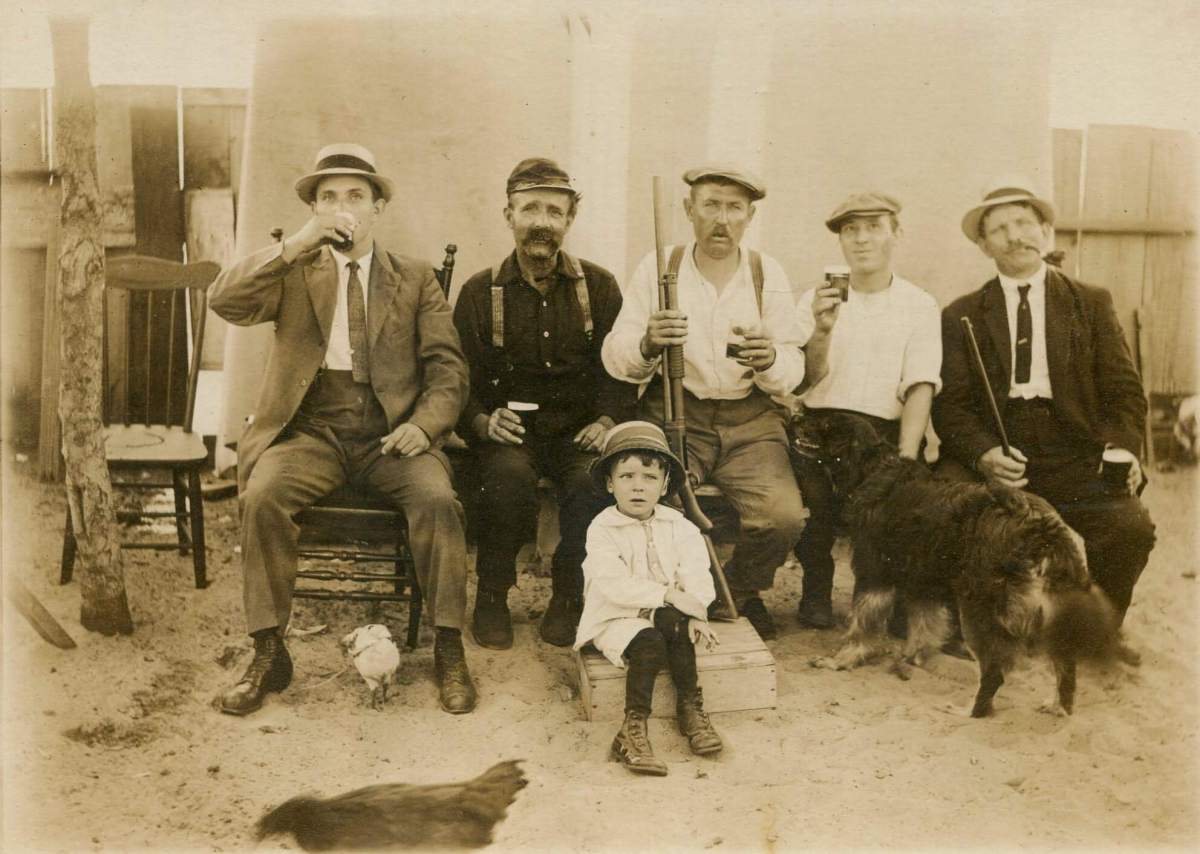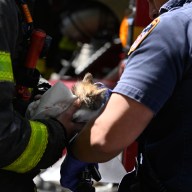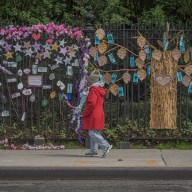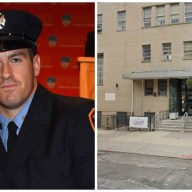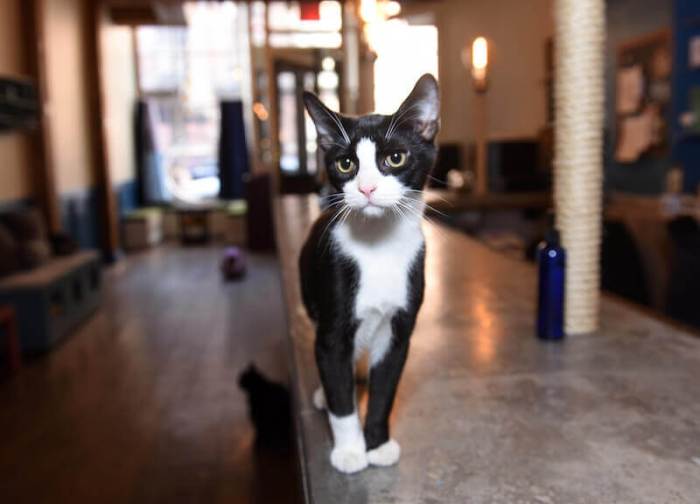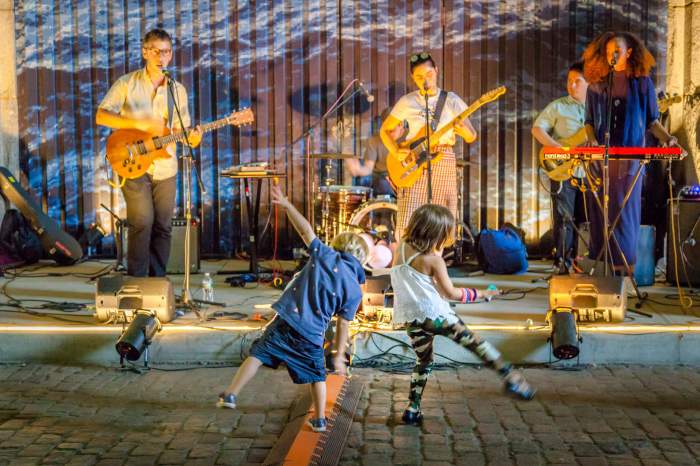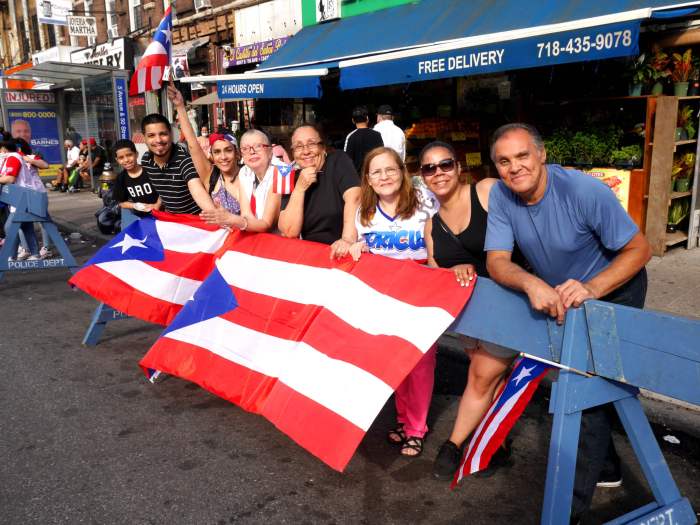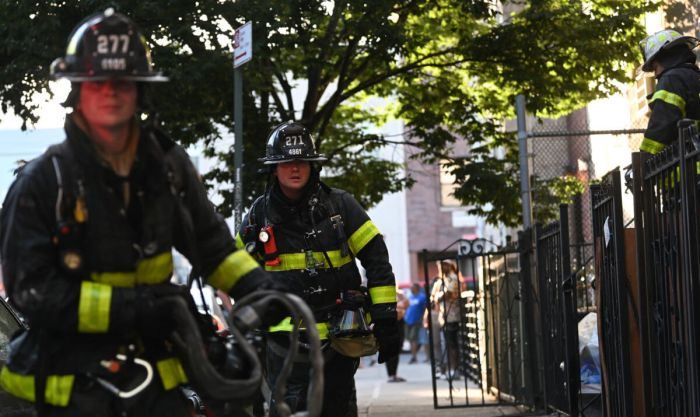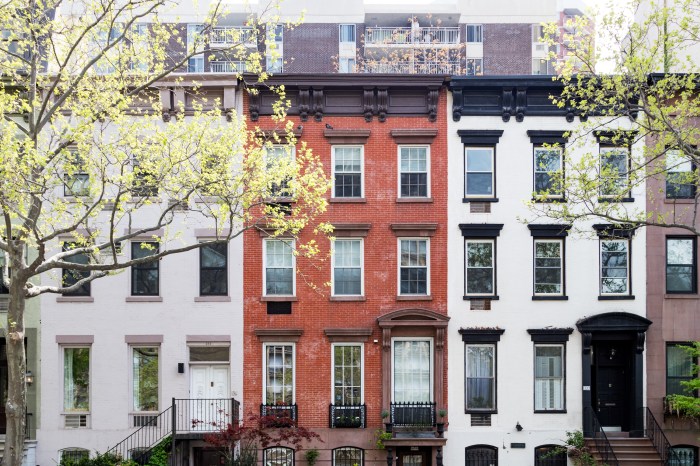A three-fold exhibit exploring the history of sanitation in New York City is now on view at Floyd Bennett Field, where some of the most notable events in the occupation took place.
The Sanitation Museum — spearheaded by the Jamaica Bay–Rockaway Parks Conservancy in collaboration with Gateway National Recreation Area, the Sanitation Foundation, Photoville and local author Miriam Sicherman — is already open to the public, but will see an opening ceremony on June 25. Festivities kick off at 11 a.m. and will include access to the currently closed visitor’s center for the day and a DSNY-sponsored Touch-a-Truck that lets kids get up close and personal with a garbage truck.
Scott Middleton, the parks conservancy’s partnership planner, said he dreamt up the Sanitation Museum because many haven’t heard of Floyd Bennett Field’s rich history — and don’t know what the space is really used for now.
“I was aware of [the Department of Sanitation’s] presence at Floyd Bennett Field, and was thinking most people probably don’t know that they’re there, and most people probably don’t know that there was this community here for many decades that was displaced for the creation of the airport,” he told Brooklyn Paper. “Let’s think of a way to uncover the hidden.”
After receiving support from the National Parks Service, Middleton moved forward with the pop-up project, making contact with key players: Sanitation Foundation’s Maggie Lee, who created a display showcasing the many achievements made and initiatives forged by the Department; Sicherman, who created an exhibit on her research of Barren Island; and the Gateway National Recreation Area, which helped share the history of Jamaica Bay’s sanitary landfills and what they are today.
Lee told Brooklyn Paper her exhibit informs the viewer about DSNY’s Safety and Training Facility at Floyd Bennett Field, where new sanitation workers go to learn how to operate the agency’s fleet. Her work also breaks down what kind of machinery and vehicles the fleet consists of, as well as DSNY’s mobility in cleaning up the Rockaways after Superstorm Sandy and debris from Manhattan following Sept. 11, 2001.
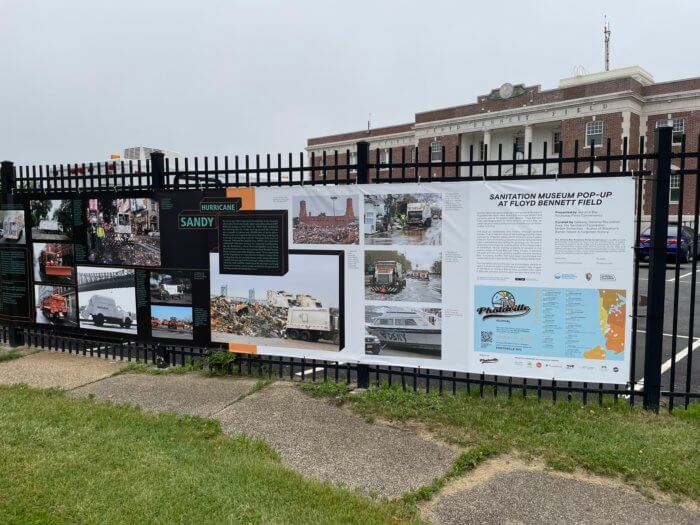
“One section of the exhibit is describing the cleanup effort after Hurricane Sandy happened, they worked kind of around the clock for I think over the month, to really, really help the Rockaways,” Lee said. “We did a lot of cleaning and a lot of bulk collection services so that people who had gutted their homes could rebuild.”
She said the Department has a good reputation in the Rockaways, enough to the point where someone spray-painted “I heart DSNY” on the side of their boat, which isn’t something she sees every day.
“[The Rockaways] is one of the relatively few places in the city where Sanitation has a really good reputation,” Lee said. “So we have a picture from that time where someone spray-painted on the side of their boat, ‘I heart DSNY,’ which was kind of lovely.”
Sicherman said her part of the exhibit includes never-before-seen images of Barren Island — one of several smaller islands connected to create Floyd Bennett Field — that she received after she published her book, “Brooklyn’s Barren Island: A Forgotten History.” The images were sent by descendants of Barren Island residents who reached out to her after seeing her research, which depicts the daily life of the forgotten island’s inhabitants, from feeding their chickens to celebrating special occasions like weddings and graduations.
“Hearing from Barren Island descendants has been one of the most rewarding parts of publishing my book,” Sicherman said. “They often share personal anecdotes and photos. When descendants share photos with me, it has been wonderful to see daily life on the island, from ordinary routines like feeding the chickens, to special events like school graduations and weddings.”
She said the exhibit has an added specialness of being in the space that, once filled with garbage, attracted immigrant workers to process trash and raise their families. Barren Island residents were displaced by the construction of Floyd Bennett Field in the 1930s, and anyone who remained was kicked out by Robert Moses himself in 1936.
“I think it’s really exciting to stand where Barren Island was, and through the images, see what it was like a century ago,” Sicherman said. “For me, it was a good challenge to boil down some of the most important and interesting aspects of island life into pieces of text that are short enough for captions, yet still tell a thorough story.”
The upcoming opening celebration will allow visitors to enter the Ryan Visitor’s Center for one day only, where they’ll get to view a 3D replica of Barren Island from the 1920s and 30s made by former resident Willie Meier, and contributed to the museum by his family.
“At the opening event on June 25, thanks to his family’s generosity, visitors will be able to see the 3-D model that Willie Maier created of the island during his childhood in the 1920s and 30s,” Sicherman wrote. “The visitor’s center… will not be accessible during the rest of the time that the pop-up is up, but when the visitor’s center reopens, it will be there.”
The Gateway National Recreation Area focused its part of the exhibit on the sanitation landfills that make up Jamaica Bay and what they are used for now, most notably the Pennsylvania Avenue and Fountain Avenue landfills that are now Shirley Chisholm Park. Other widely-used former landfills are Dead Horse Bay in Marine Park and Spring Creek in East New York, as well as Rockaway Community Park, which was developed from the Edgemere Sanitary Landfill.
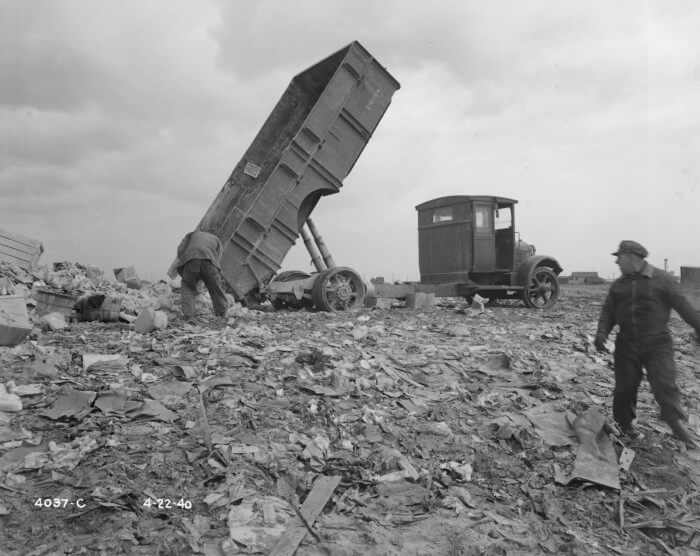
Middleton said the sanitation history of Floyd Bennett Field shares a different narrative than the military and aviation histories more often shared of the space — and that this exhibit was a great opportunity to share the lesser-known trashy past.
“The visitor’s center has a lot of great exhibits and information in it, but it’s focused really on the aviation history of Floyd Bennett Field, which is really important … but that’s the story that I think is told most frequently,” he said. “That, and the military history of Floyd Bennett Field. The Navy occupied it for a few decades.”
“I found that the story of who lived there in the 19th century and early 20th century was less in the fore in the exhibits at Floyd Bennett Field, so I am happy to use this Sanitation Museum pop-up as an opportunity to bring that information to light for members of the public who are passing by,” Middleton added.
The display, located on the fence outside of the visitor’s center, is a part of Photoville, an open-air festival that displays informative and cultural photo exhibits across the Five Boroughs for most of June. The Sanitation Museum Pop-Up, though, will remain on display through Labor Day.
“As far as I know, the fence has never been used for anything except for keeping people on one side of the fence or the other,” said Middleton, “so it’s nice to use it for an educational purpose.”
For more information or to register for the June 25 opening ceremony, click here.



